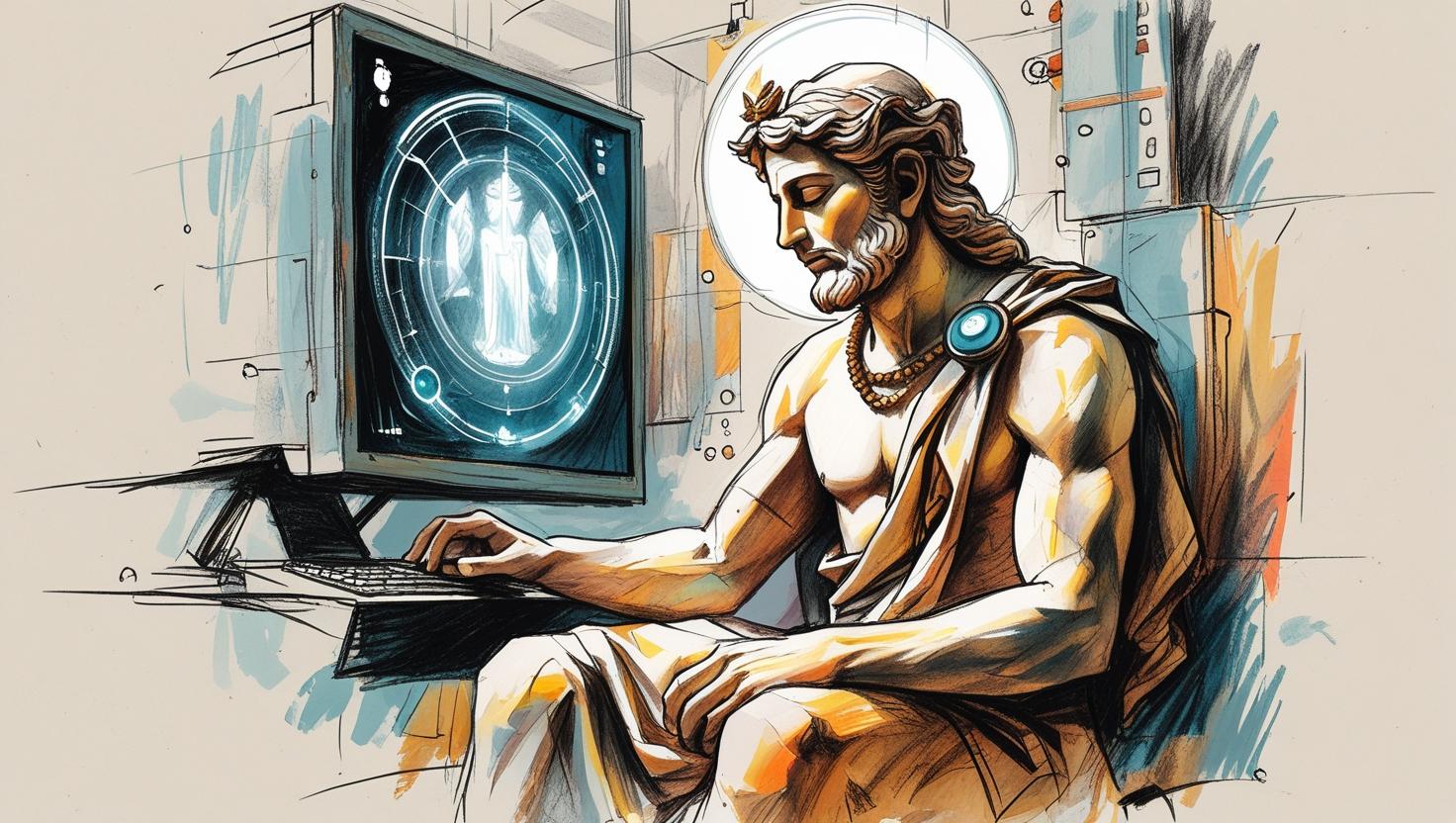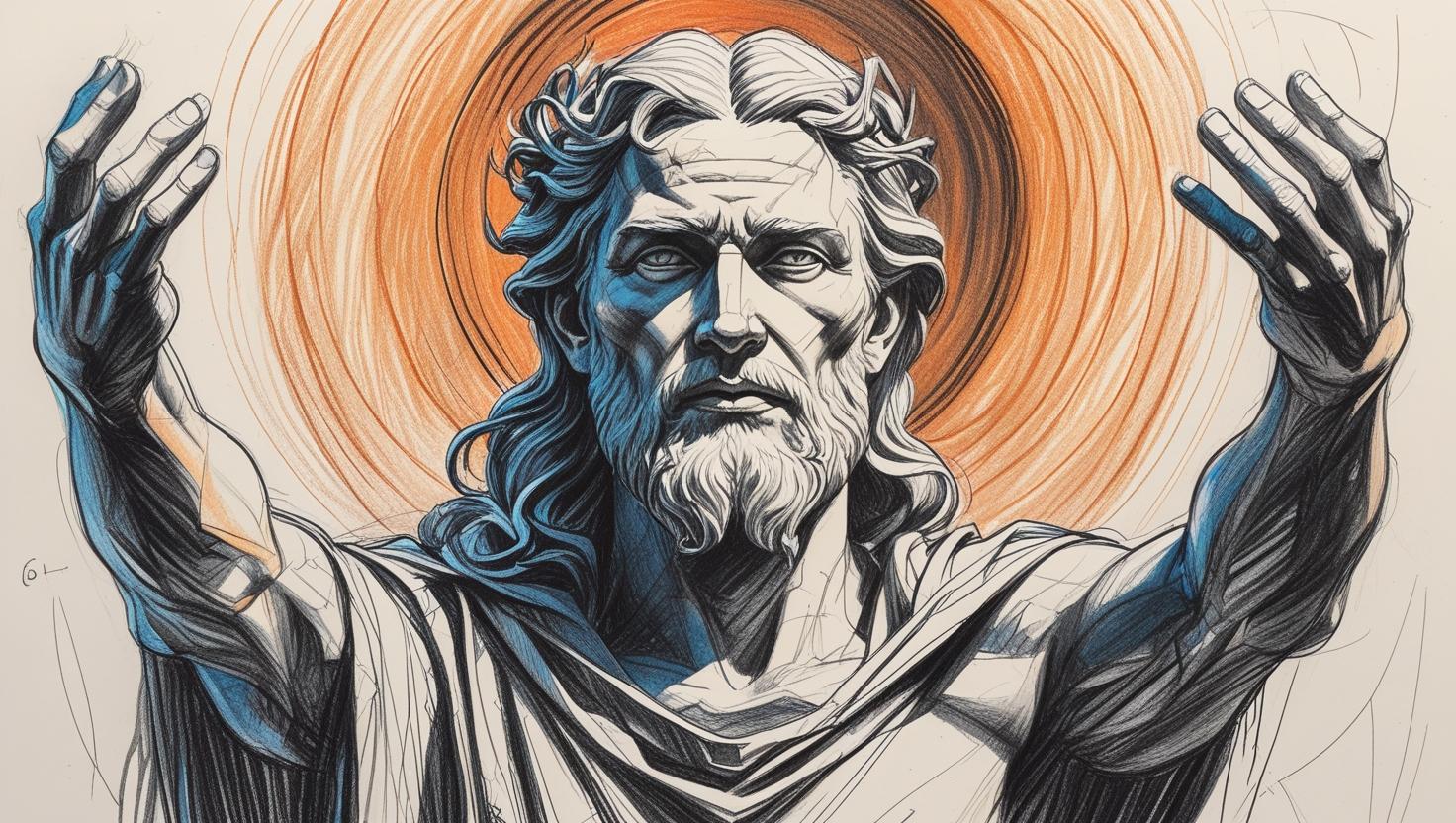Faith in the Code: Why Belief in God and Simulation Theory Aren't Mutually Exclusive

At first glance, the two ideas seem worlds apart. On one side, we have the ancient, faith-based belief in a transcendent, all-powerful God. On the other, we have a modern, quasi-scientific hypothesis, popularized by thinkers like Nick Bostrom and blockbuster films like The Matrix: the idea that our reality is an advanced computer simulation.
For many, these two concepts are fundamentally opposed. One is seen as the domain of spirituality and tradition, the other of cold, hard logic and technological speculation. The simulation hypothesis, some argue, replaces the need for a divine creator with a cosmic programmer—a figure who might be nothing more than a curious teenager in a higher dimension.

However, a closer look reveals that not only can these two beliefs coexist, but they can also inform and enrich one another in fascinating ways. Here are several arguments for why faith in God does not exclude a belief in a simulated universe.
1. The Creator and the Simulator: A Question of "How" vs. "Who"
The most fundamental point of convergence is the concept of a creator. Religious traditions describe God as the ultimate architect of the universe, who brought reality into existence ex nihilo—out of nothing. Simulation theory posits a "Simulator" or a group of programmers who designed and run our reality.
These two roles are not mutually exclusive; they could very well be one and the same.
Faith tells us who created the universe: God. It doesn't always specify the exact how. The Bible's opening, "God said, 'Let there be light,'" could be a poetic description of the ultimate cause. For a divine being, what is the difference between speaking a universe into existence and programming it? The "code" of the simulation could simply be the language God uses to create. The laws of physics, in this view, are the fundamental rules of the simulation's engine, authored by a divine programmer.
2. A Higher Reality
A core tenet of many religions is that our physical world is not the ultimate reality. There exists a higher, more fundamental plane of existence—be it Heaven, the spiritual realm, or Nirvana. Our earthly life is seen as a temporary journey, a test, or a preparation for this truer reality.
Simulation theory mirrors this concept almost perfectly. It argues that our perceived universe is a simulated layer, running on a computer in a "base reality" that is far more real than our own.
This parallel is striking. Both faith and simulation theory ask us to accept that what we see, touch, and measure is not the full picture. Both point towards a reality beyond our immediate perception, challenging materialism and suggesting that our existence is part of a much larger, more complex system.

3. Purpose, Morality, and "The Great Experiment"
A common objection to the simulation hypothesis is that it renders our lives meaningless—we are just characters in someone else's video game. But this critique ignores a crucial question: why would a simulation be created in the first place?
It's unlikely that a being or civilization capable of creating an entire universe would do so out of sheer boredom. A sophisticated simulation would almost certainly have a purpose. Perhaps it's an experiment to study the emergence of consciousness, a "soul-making" environment designed to foster moral and spiritual growth, or an ancestral simulation run to understand the past.
This search for purpose aligns perfectly with religious thought. Many faiths teach that we were created for a reason: to love, to learn, to grow, and to form a relationship with our creator. A simulated universe, designed by a benevolent God, could be the perfect incubator for these goals. Our struggles, choices, and triumphs would not be meaningless data points but essential parts of a divine plan unfolding within the framework of the simulation.
4. Miracles and Divine Intervention as "Patches"
How can miracles and divine intervention fit into a world governed by the strict rules of a computer program? Easily. In a simulation, the one who controls the code also controls the rules.
A miracle, in this context, would be the Simulator directly intervening in the system. Parting the Red Sea? A temporary alteration of the physics engine's parameters for water. A resurrection? Re-instantiating a character's data or overriding the "permadeath" function. Divine revelation? A direct message sent from the administrator to a user.
Rather than violating the laws of nature, these events would be the work of the very Lawgiver who wrote the code in the first place. This provides a conceptual framework that bridges the gap between the seemingly impossible events described in holy texts and a universe that otherwise runs on consistent, observable rules.
Conclusion: A New Language for an Old Faith
To believe that we might be living in a simulation is not to abandon God. Instead, it can be a way of reframing ancient theological questions in a modern technological language. The simulation hypothesis does not answer the ultimate question of who or why—it only offers a potential how. The identity of the Simulator remains the great mystery.
For a person of faith, that Simulator has a name. The universe being a divinely-coded simulation doesn't make God smaller; it recasts God as the ultimate computer scientist, the grand architect of both the physical and the digital. It suggests that the fabric of reality may be even more intricate and wonderfully strange than we ever imagined, a place where faith and reason, code and spirit, are not enemies, but different facets of the same ultimate truth.



